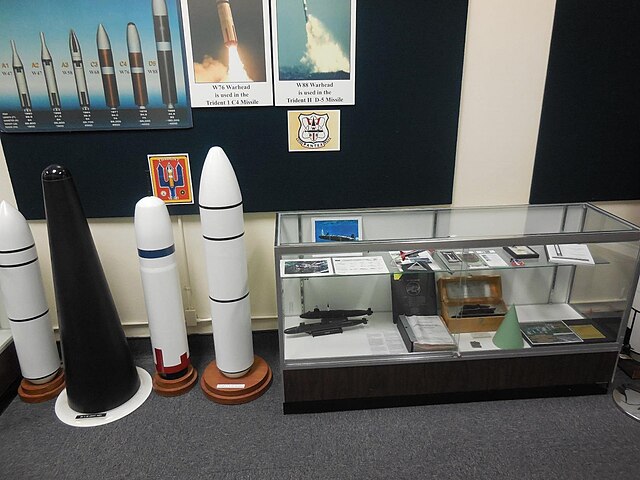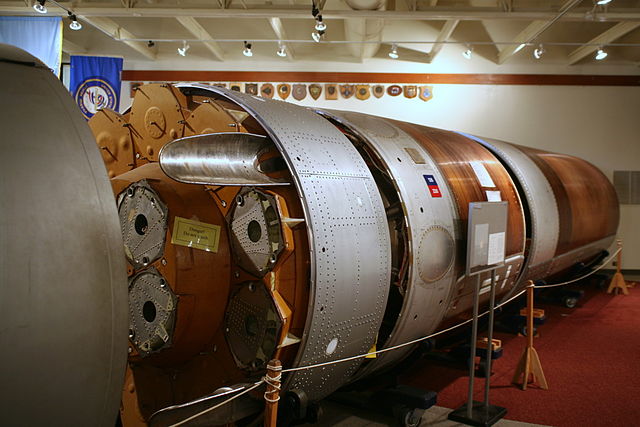The UGM-73 Poseidon missile was the second US Navy nuclear-armed submarine-launched ballistic missile (SLBM) system, powered by a two-stage solid-fuel rocket. It succeeded the UGM-27 Polaris beginning in 1972, bringing major advances in warheads and accuracy. It was followed by Trident I in 1979, and Trident II in 1990.
A Poseidon missile lifts off after being launched from the submerged USS Ulysses S. Grant (SSBN-631) in May 1979
The Mark 3 Reentry Body (RB) that would contain the W68 warhead carried by Poseidon.
Mark 3 with objects for scale.
Poseidon missile on display at the USS Bowfin Submarine Museum & Park.
Submarine-launched ballistic missile
A submarine-launched ballistic missile (SLBM) is a ballistic missile capable of being launched from submarines. Modern variants usually deliver multiple independently targetable reentry vehicles (MIRVs), each of which carries a nuclear warhead and allows a single launched missile to strike several targets. Submarine-launched ballistic missiles operate in a different way from submarine-launched cruise missiles.
A UGM-96 Trident I clears the water after launch from a US Navy submarine in 1984.
Polaris A-1
A Trident II missile just after launch.
Montage of the launch of a Trident I C-4 SLBM and the paths of its reentry vehicles








